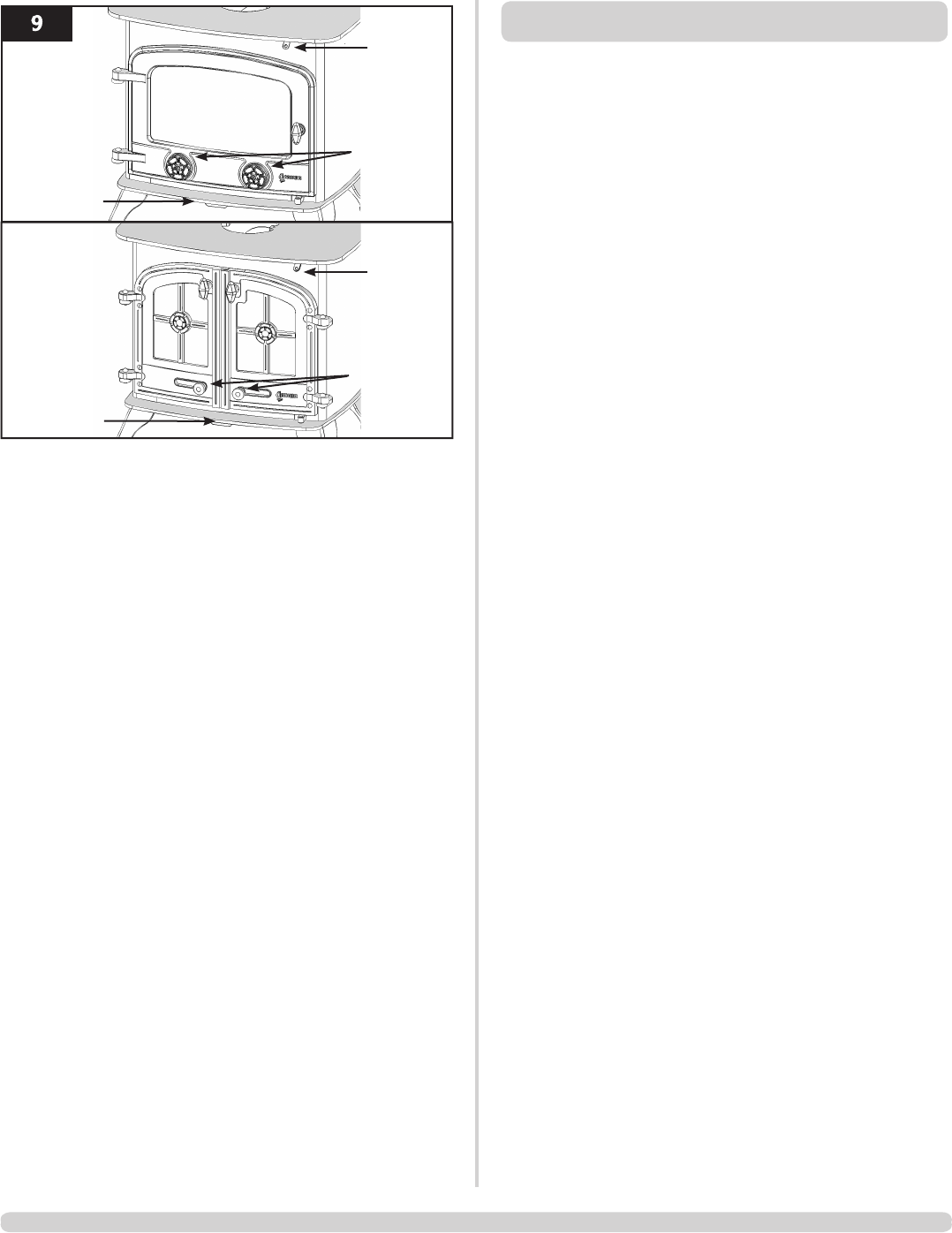
88
Secondary Air:
Fully Closed
Primary Air:
Adjust
Secondary Air:
Fully Closed
Primary Air:
Adjust
Air Wash:
25% Open
Air Wash:
25% Open
5.7 De-ash the fire bed before re-fuelling, see Section 7 Ash
Removal.
• Open the Primary air control fully to establish a glowing
bed before adding new fuel
• Burn new fuel at high output for a few minutes before
adjusting the Primary air control to the desired setting
• Refuel little and often for clean, efficient burning.
5.8 Experience establishes control settings to suit personal
preferences
5.9 Do not burn large amounts of fuel with the Primary Air
Control on low settings for long periods of time. This
reduces the glass cleaning effect of the air wash and causes
tars and creosotes to build-up in the appliance and flue
system.
5.10 When in use, burning the appliance at high output for a
short period also reduces tars and creosote.
5.11 You must burn only anthracite or smokeless fuels
suitable for use in closed appliances.
5.12 Do not burn bituminous coal, ‘petro-coke’ or other
petroleum based fuels as this invalidates the product
guarantee.
Do not load fuel above the log guard and the secondary
combustion inlets at the back of the firebox.
See Diagram 7
6. BURNING TIPS
6.1 Fuel Quality (Wood)
Use wood with a moisture content of less than 20%.
Seasoned logs have the bark beginning to lift and peel away
and cracks radiating from the centre. They feel lighter than
fresh cut wood of a similar size and sound hollow when
struck against each other. Logs should not feel damp or
have moss and fungal growths.
Symptoms related to wet wood:
— Difficulty starting and keeping a fire burning well
— Smoke and small flames
— Dirty glass and/or firebricks
— Rapid creosote build-up in the chimney
— Low heat output
— Short burn times, excessive fuel consumption and
blue/grey smoke from the chimney
• Burn at high output at high output for a short period each
day to avoid large build-ups of tars and creosote within the
appliance and the flue system
• Use Stovax Protector chimney cleaner to reduce this
problem
6.2 Fuel Quality (Solid Fuel)
• Use recommended solid fuels approved for use with
closed appliances.
Symptoms related to unsuitable fuels include:
— Difficulty starting and keeping a fire burning well
— Smoke and small flames
— Dirty glass and/or fire bricks
— Short life span for grate, baffles and internal firebricks
— Permanent staining of glass
6.3 Air inlets puffing smoke
Combustion gases build up in the firebox and ignite as small
explosions, causing smoke to puff out of the air inlets and
other openings. This occurs if the air controls are shut soon
after adding new fuel to a very hot fire. Stop by opening the
air controls to increase combustion air and burning rate.
6.4 Flue Draught
The chimney has two main functions:
1) To safely remove the smoke, gases and fumes from the
house.
2) To provide a sufficient amount of draught (suction) in the
appliance ensuring the fire keeps burning.
Draught is caused by the rising hot air in the chimney when
the appliance is lit.
Symptoms of poor performance related to flue draught
include:
— Excessive fuel consumption (high flue draught)
— Poor burning control, overheating (high flue draught)
USER INSTRUCTIONS


















